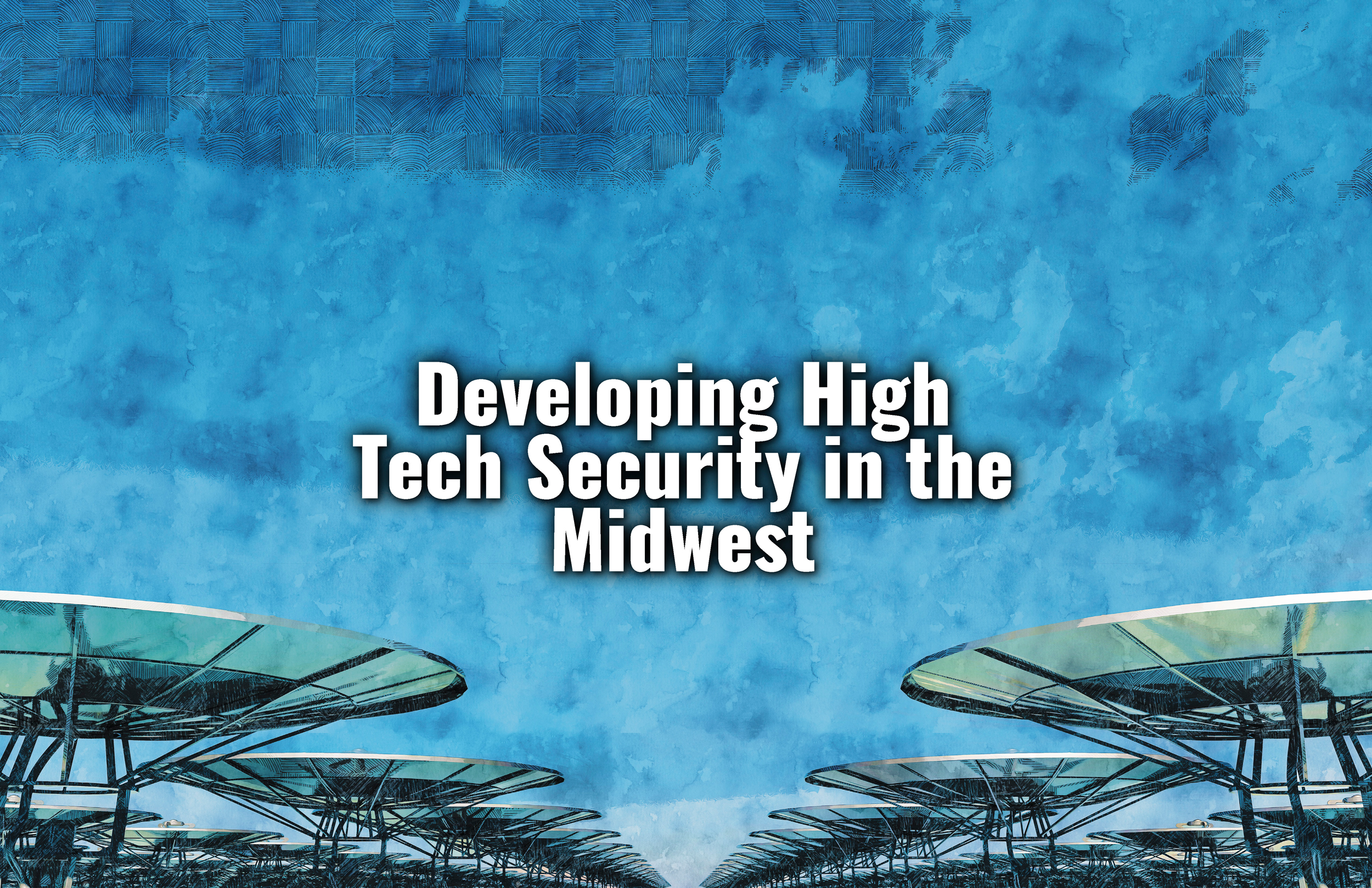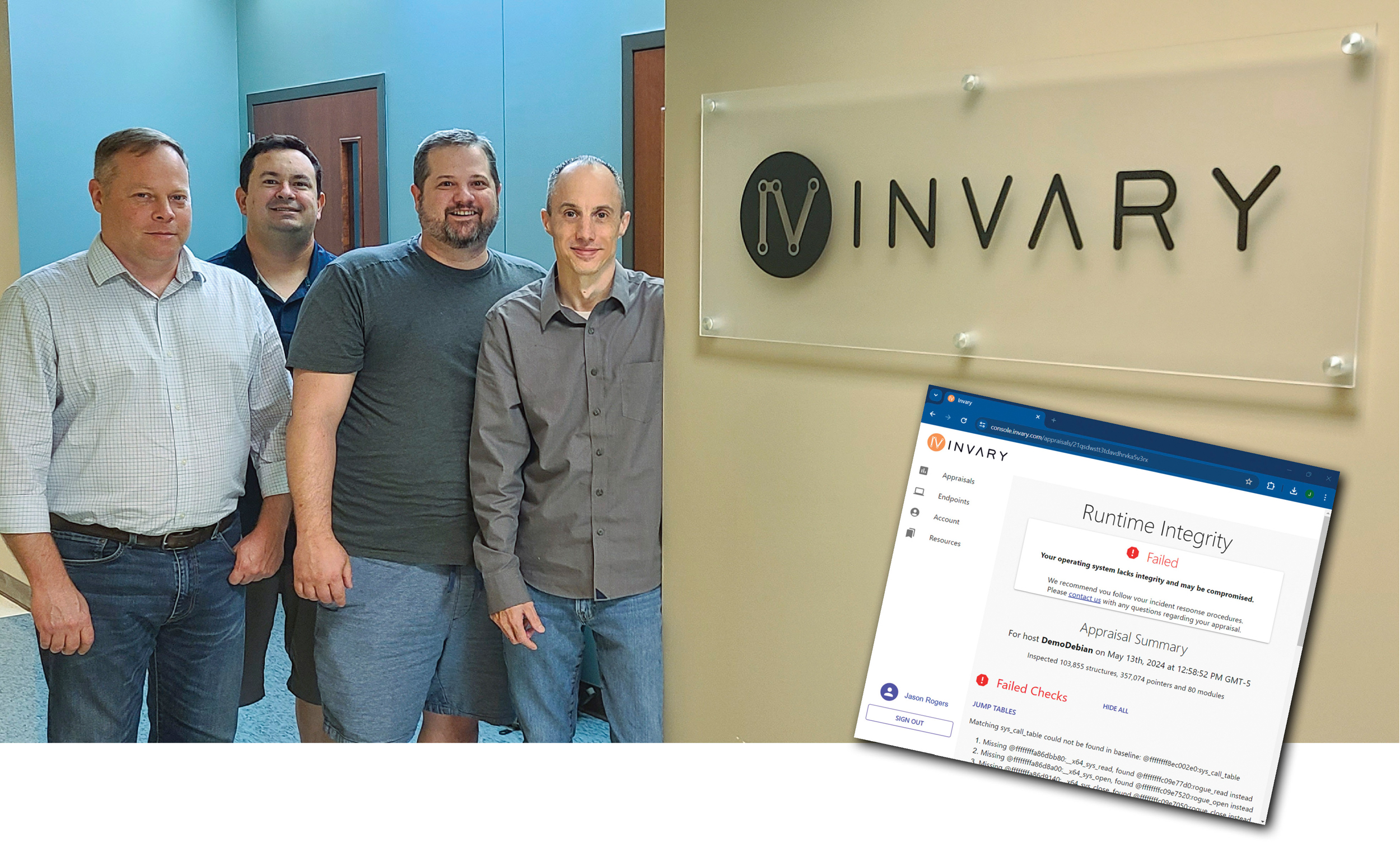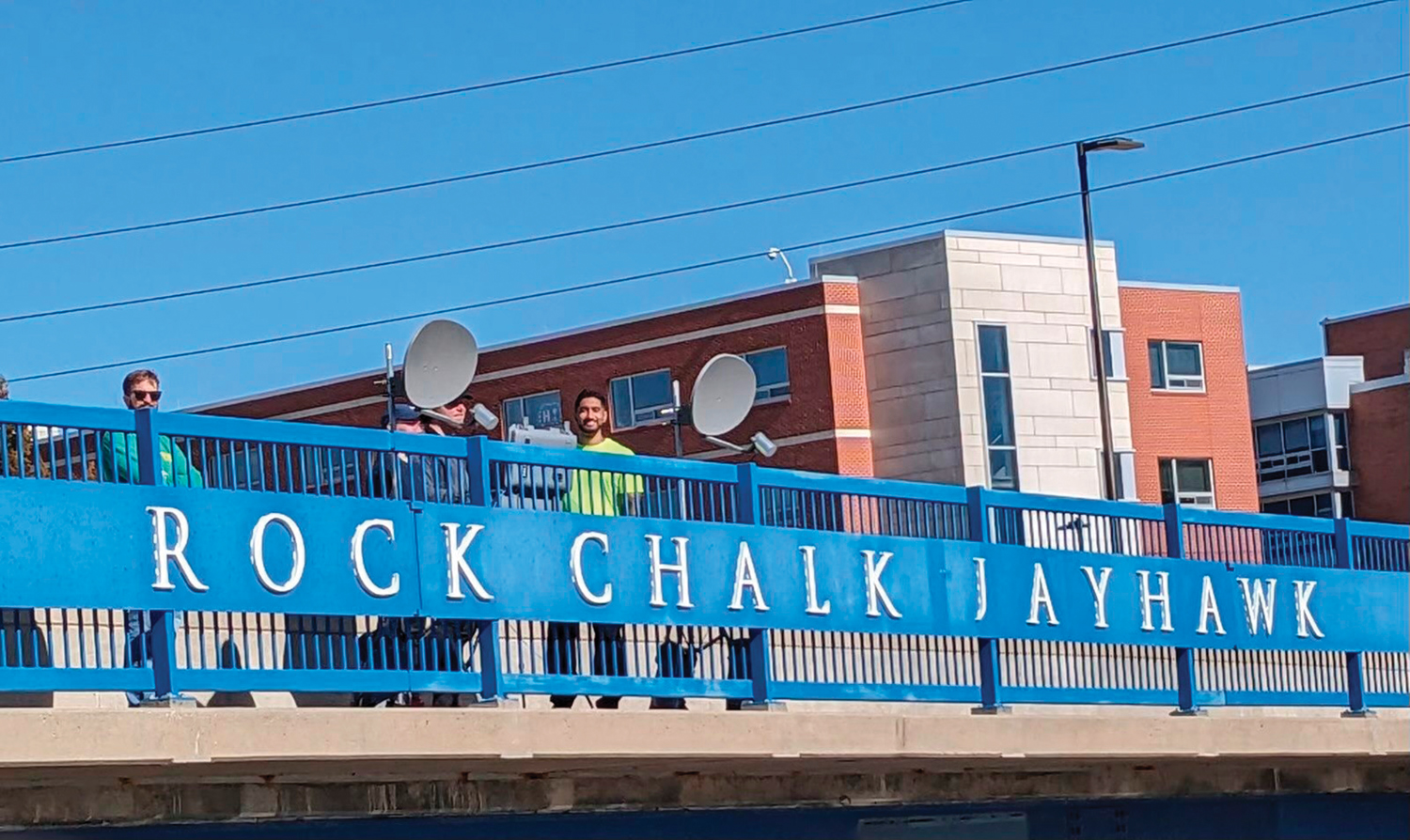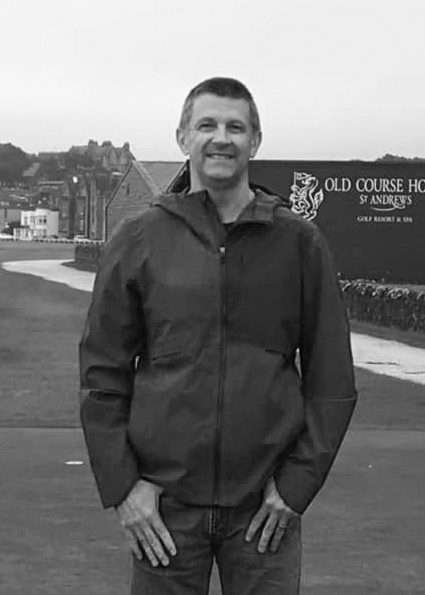| story by | |
| photos by | Steven Hertzog |
| OPEN A PDF OF THE ARTICLE |
Some of the work done by companies with KU Innovation Park may go unnoticed by most, but it can be instrumental in areas such as personal and online safety, climate change, sustainability and food security.

Developing High Tech Security in the Midwest
It’s likely many Lawrence residents have no idea what the majority of companies or entities that reside or have resided in KU Innovation Park do. If they did, they might sleep better at night.
A handful of businesses involved with the startup incubator for innovation on the University of Kansas’ West Campus perform the type of heavy, and heady, work designed and engineered to make the United States more secure and safe for those who inhabit it—namely, us. They tackle technological work performed in collaboration with the federal government that sources locally can’t even discuss in detail because of its highly classified subject matter. Or in one instance, it’s work that, while not explicitly falling within the realm of national security, is instrumental in fighting global climate change and making sure agriculture is produced efficiently and sustainably to help provide food security to the populace.
- Invary creates computer software that secures an entity’s security posture by detecting threats to operating systems during runtime (the time that a program is running alongside all the external instructions needed for proper execution) that other security programs miss. It is runtime security intelligence that prevents ransomware and data breaches, locates threats in cloud architecture and restores confidence in security stacks.
- Shannon Blunt, director of Kansas Applied Research Lab (KARL) and University of Kansas (KU) Radar Systems and Remote Sensing Lab (RSL), oversees a team of some of the brightest electrical engineers anywhere and derives complex equations and algorithms used in advanced radar sensing utilized by the U.S. Department of Defense and the defense industry.
- While not involved directly with the government, Ainstein AI, which started at KU Innovation Park but has since moved to its own location in West Lawrence, develops radar-based altimeters that can be used on anything from detecting how thick a polar ice cap is to helping a Doosan Bobcat forklift, excavator or tractor travel safely in reverse.
They do their work quietly and modestly—by necessity and legality, if for no other reason—and it’s probably just as well. It’s not as though they’re building products noticed by everyday folks. But what they do is essential in helping good, honest-working companies stay safe from bad actors, of which there are multitudes. The next time you buy a vehicle with radar cruise control, you might want to take a little local pride in where that technology is created.
“Most people think technology just happens on one of the coasts,” says Jason Rogers, CEO at Invary. “People don’t realize a lot of tech is being developed right here in the middle of the country, right here in our area.”

Invary CEO, Jason Rogers (right) and staff. Below – screen shot of INVARY site integrity.
Runtime Security Against Cyberattacks
Rogers has a favorite analogy he likes to use when describing the service Invary provides to its customers and clients: Anyone can look at a clear night sky and see that the thousands of stars above are in the same place and in the same patterns night after night. It’s how astronomers have studied the cosmos throughout centuries; it’s how ancient mariners navigated their explorations. If one of those stars or constellations gets moved, it throws off everything.
LOCAL MATTERS
Our Local Advertisers – Making a Positive Impact
The same can be said for a computer’s operating system. If just one small file gets changed, it can corrupt the entire structure.
“Existing security products work by attempting to check every star to see if they are secure,” Rogers explains. “What we do is, we look at the night sky and ensure it maintains its expected invariance.
“Operating systems have an expected invariance much like our night sky,” he continues. “And we are able to uniquely detect when a bad guy disrupts that and inform our customers. Then, if needed, we work with partners to help customers mitigate the attack.”
Invary is a mix of security researchers, operators and technology experts supported by federal and university partners. Founded in 2019 by Perry Alexander, an AT&T Foundation Distinguished Professor of Electrical Engineering and Computer Science at KU and an authority in trusted systems research, the company is based off an intellectual property license from the National Security Agency, with which the company continues to do research.
Invary, which employs six (four local, two remote), provides security to operating systems through a platform it calls Invary Runtime Integrity. It launched its product, which helps organizations comply with Zero Trust guidelines from the National Institute of Standards and Technology, last August.
“When a computer boots, you can have a sense it started securely,” Rogers explains. “But the second it starts, it becomes vulnerable to attack.
“When securing a system, Zero Trust says you need to assume an attacker can get to anything anytime,” he continues. “The first step in any Zero Trust environment is to validate any assumptions of security you have. Challenge all assumptions and validate them. We help organizations validate their operating systems are behaving as expected and not compromised.”
Though Invary’s main customers are government and defense entities, “there’s been quite a bit of interest in critical infrastructure on both private and public sides of the aisle,” Rogers says.
Invary’s Runtime Integrity service is accessible to everyone. In fact, the public can go to the Invary website and run a one-time check of a system security—a runtime integrity score—free of charge.
“It’s an interesting market,” Rogers says. “We see a lot of problems daily. It’s a very complex ecosystem. We provide a unique solution that didn’t exist before we came along. We want to ensure that a system is the same at runtime as when it was booted.
“I see substantial growth in our future,” he adds.

KU Radar Systems Lab using separate transmit and receive antennas being used to perform a radar data collection looking down south Iowa street.
Growing Interest in Radar Sensing
KARL’s Blunt, also a Roy A. Roberts Distinguished Professor of Electrical Engineering and Computer Science, says radar research at KU dates back to 1964. Nichols Hall, which opened in 1971 and where space technology research took place in the early days, was financed by NASA. What most may not realize is that much of the radar development was done here at KU. After the end of the Cold War, research on radar began to wane, but there was a pivot back to it following the 9/11 terrorist attacks in New York City.
After working at the U.S. Naval Research Laboratory in Washington, D.C., Blunt arrived at KU in 2005.
“Not many schools do radar research anymore,” Blunt says. “Since 9/11, there’s been a growing defense portfolio. With the geopolitical environment right now, there’s a lot of interest in what we do.”
He says his team of five faculty members and roughly a couple dozen students is working on 15 different projects and has, thus far, received $10 million in funding from the defense industry and expects to expend about $5 million this calendar year. What it does mostly is work on man-made radar sensing, developing mathematical algorithms that can take data from radar signals and translate them into practical applications.
“From the defense side, we can track what people are doing,” Blunt says. “Radar can sense how far, how fast something is coming at you and from what angle. We can also use it to detect motion, to classify it. We can identify large objects like ships on water. Anything that has a physical property.”
He says his expertise is in radar signal processing.
“We’re all electrical engineers, but the field of signal processing within electrical engineering is essentially a form of applied math,” he says. “How do you translate theoretical math and apply it to real hardware and operational systems? Different applied math within electrical engineering is like two different languages. Figuring out how those languages connect can be really hard.
“There are so many emerging applications for radar sensing,” Blunt continues. “We’re spanning theory to application. That’s why so many of our students have won awards.”
He says he’s adding three new faculty members this summer.
“We’re doing that because we’re drowning in the work,” Blunt explains, work that starts with the U.S. government then goes to a defense contractor, and then finds its way to Blunt and his team. He expects to also pick up some more seniors majoring in electrical engineering. Students either can work two to two and a half years on a master’s degree in electrical engineering or computer engineering, or four to five years on a Ph.D. in electrical engineering. He says graduates receive research internships, both military and civilian, setting them up for high-paying research jobs.
“In our field, it’s not uncommon for there to be bidding wars over students,” Blunt adds. “We’ve had some students come through here who have done some firsts or something that’s never been done. Taking a new mathematical concept and applying it to real data to achieve some never-before-seen result. That’s what really makes this exciting.”
Radar Tech for Civilian Use
In 2013, KU professor Zongbo Wang was performing studies on ice sheets in the Arctic Circle when it dawned on him that radar sensing, typically used in detecting movements and locations of objects, also could be applied in measuring ice thickness and mass, giving a needed boost to the study of global ice melting and climate science.
Two years later, he took that seed of an idea to expand radar’s uses and founded Ainstein AI, a company of 34 employees which, among other creations, developed one of the first functionally safe radars with an ability to connect to the operational drive train of a machine. Ainstein is working toward using artificial intelligence to speed up classification.
“The ideal would be ultimately to have a shape library,” says Ainstein AI CEO Matt Stratemeier. “The more we introduce repetition into it, the more we introduce AI into it. That’s what we’re working toward. We’re excited about getting to that point where AI will be able to distinguish items.”
Stratemeier says Ainstein has three main areas where it concentrates its technology.
- Aeronautics: engineering radar altimeters that allow drones and other unmanned aerial vehicles to know their precise distance from the ground
- Specialty vehicles: radar sensing typically used for collision avoidance on everything from the aforementioned Bobcat forklifts to automobiles to delivery trucks
- Smart ag: radar for large drone use utilized for field surveillance, land altitude, aerial fertilization and field-mapping (the company also has a partnership with CNH Industrial for use of radar on the back of Case New Holland combines, which allows for even distribution and spread of chaff out of the back when cutting wheat).
“We saw a need to combine technology with agriculture to help make processes more efficient and accurate,” Stratemeier says. “The inside of these Case New Holland combines looks like a video game. It’s amazing technology.”
A project that has Stratemeier and Ainstein AI especially excited these days involves sports. Ainstein has entered a partnership with Full Swing Golf and is one of the main tech drivers behind a project that uses a radar array capturing the distance, speed and direction a golf ball travels, and returns digital readouts that can be used for swing or equipment analysis, among other uses.
“We’re excited to be a part of this venture and see what radar can do in a recreational environment,” he says.
Stratemeier believes he sees the world of Ainstein AI continuing to expand into new areas as well as improving the areas in which it already has expertise.
“We just want to keep doing better,” he says, “refining to keep making what we have better and continuing innovation.”
In today’s turbulent and potentially dangerous world, it’s the work of companies and entities such as these that keeps all of us a little bit safer and more secure—and even contributes to a better night’s sleep.





